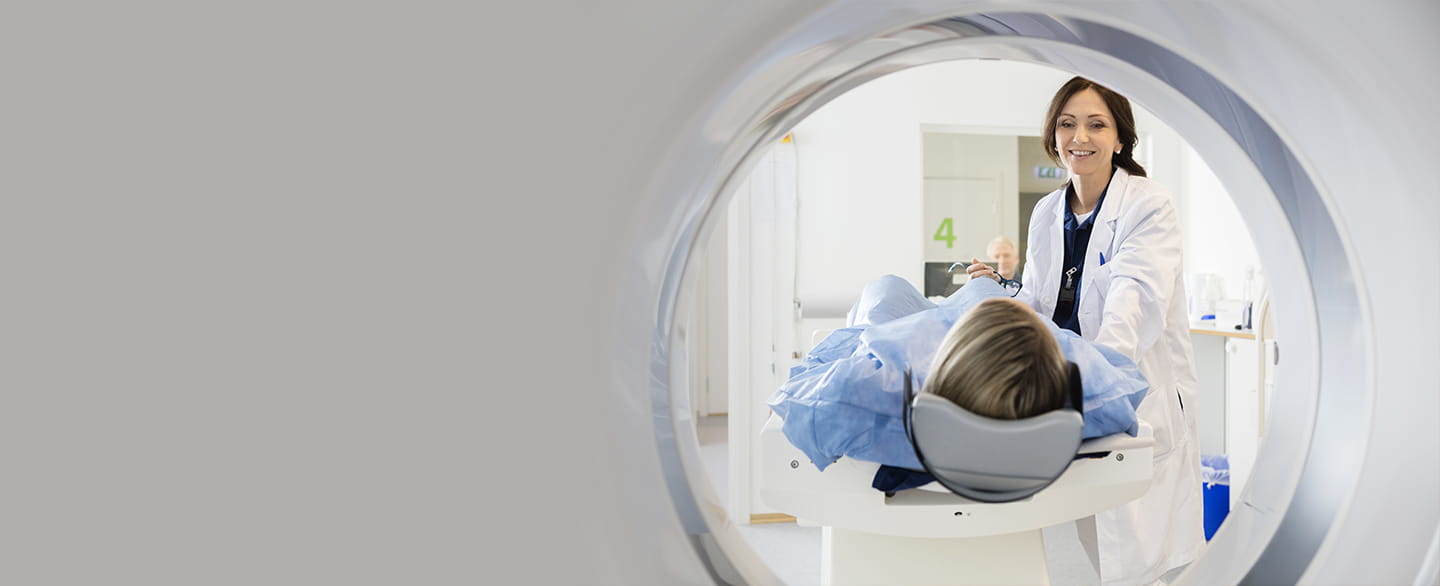- Home
- Conditions and Care
- Specialties
- Radiology
- Resources
Radiology

Patient Resources
Information you need in order to prepare for your visit to Radiology at The University of Kansas Health System.
Prepare for your exam
Radiation safety
We place the highest importance on your well-being. Your care team will minimize your exposure to the radiation of X-ray, CT and nuclear imaging procedures as much as possible. The benefits of these technologies, which help with diagnoses and treatments, far outweigh the risk.
Safety guidelines for glucose monitor users
If you wear a continuous glucose monitoring device to monitor your glucose levels in real time, there are safety guidelines you should know:
- Glucose monitoring appliances can be damaged by ionizing radiation and should not be exposed.
- Remove the device during any exam that requires use of ionizing radiation, including CT, X-ray, mammography, nuclear medicine and fluoroscopy exams.
- Exposure to ionizing radiation can lead to device malfunction, which may result in inaccurate alerts and blood glucose readings.
- Schedule your exam near the end of your 10-to-14-day device period to avoid needing to replace an extra device.
For questions about safety and continuous glucose monitors, contact the manufacturer of your device. Manufactures will replace your sensors if they need to be removed for diagnostic testing.
- Abbott Freestyle Libre: 855-632-8658
- Dexcom: 888-738-3646
- Medtronic: 800-633-8766
- Tandem t:slim: 877-801-6901
- Omnipod: 800-591-3455
Radiation frequently asked questions
We offer a variety of appointment types. Learn more or call 913-588-1227 to schedule now.




